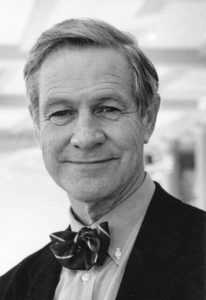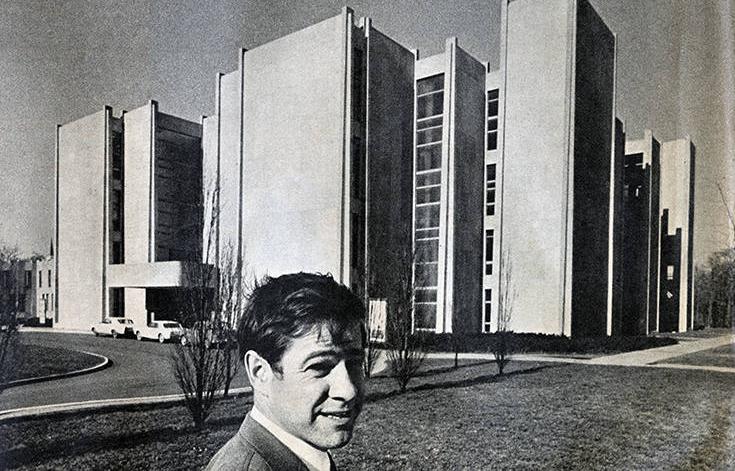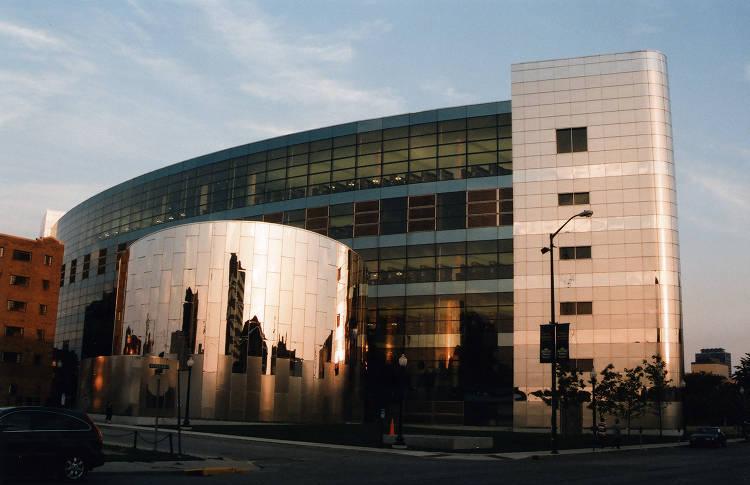
Photo info …
Credit: Indiana Historical SocietyView Source
(Aug. 10, 1927-May 17, 2016). Evans Woollen’s Indianapolis-based architectural career spanned more than 50 years and included many of the city’s best-known modern landmarks, , the Federal Building, and the expansion of Central Library.
Born in 1927 to Evans Woollen II and his wife Lydia Jameson, Woollen’s mother was a direct descendent of , the first treasurer of the State of Indiana, who helped select the site for the new state capital in 1820.
He worked in the offices of prominent architects, most notably Philip Johnson, primarily designing residences in Connecticut. In 1955 he returned to Indianapolis and married Nancy Sewell. The same year, he set up an independent practice on Monument Circle and launched what became one of the city’s most significant architectural firms.

Woollen began his independent practice with small residential projects, each uniquely expressing tenets of modernism. His first commercial projects—branch banks for —also broke with prevailing tradition.
marked a breakthrough in Woollen’s career. Due to the large scope of the project, he teamed up with his former mentor, architect John Johansen. The design of Clowes Hall was praised and published in several European architectural journals and received considerable attention in the national press.
The success of Clowes led to numerous significant public buildings. By 1968 his firm’s work included several innovative churches (St. Thomas Aquinas), public housing (), government buildings (Minton Capehart Federal Building), and numerous campus structures—particularly performing arts centers. Indiana University’s Musical Arts Center in Bloomington was one of the firm’s most important endeavors in the 1970s, along with a smaller-scale project, the New Harmony Inn.
enjoyed a national practice and developed particular strengths in academic buildings and libraries: the Cushwa-Leighton Library at St. Mary’s College in Notre Dame; the Moody Music Center at the University of Alabama in Tuscaloosa; and the Grainger Library, University of Illinois at Champaign-Urbana. One of its most distinctive commissions was a new monastery complex and library for St. Meinrad Archabbey. Religious architecture continued to be a focus of the firm’s work with St. Andrew Abbey Church in Cleveland a prime example.

Woollen felt that his Indianapolis career culminated in his firm’s design for the major addition to , completed in 2007. Honoring the past while building for the future was always a tenet of the firm’s work. He designed the six-story ‘tower’ as a backdrop to the 1917 building, thereby preserving a monument of considerable architectural significance. He was particularly proud of the design of the light-filled atrium that links old and new.
In retirement, he turned most of his creative energy to his life-long interest in painting. The New York gallery One Art Space exhibited his work in a January 2013 show, Architecture into Painting. Woollen was the subject of two retrospective works: the 1994 documentary film Building for Meaning, which was aired on public television stations across the country, and Evans Woollen: The Art of Architecture, a 2010 photography show at the .
His firm garnered more than 20 design awards from the American Institute of Architecture (AIA), and his work was published in numerous architectural journals, most often in Architectural Record. He became a fellow of the AIA in 1983. The American Academy in Rome awarded Woollen two residential fellowships for creative pursuits in 1984 and 1996.

Help improve this entry
Contribute information, offer corrections, suggest images.
You can also recommend new entries related to this topic.

